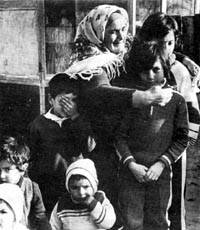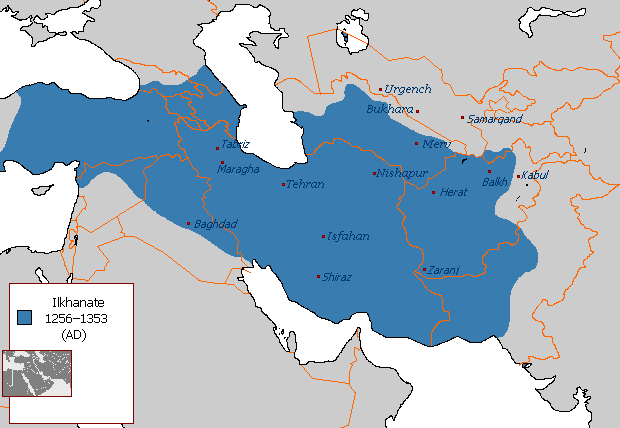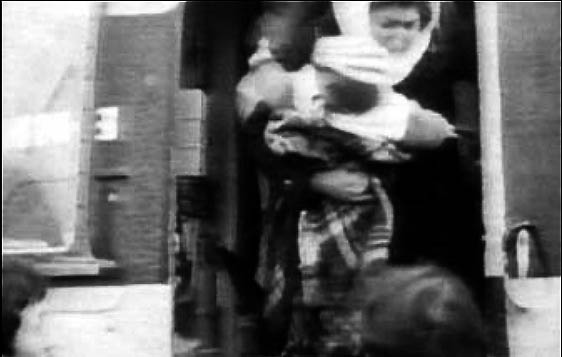Moral and physical terror, constant abuses, mass beatings made not only Azeris, but also thousands of Kurds (20,000), Yezids, Russians and also Molokans to leave their homes and become refugees.
The article «Karabakh – fifth year of war» published in the «Komsomolskaya Pravda» newspaper gives an objective appraisal to the deportation of all the national minorities left in Armenia:
«Monstrous in its absurdity understanding of self-determination as a mean for the national minorities to create a state of their own leads inevitably, and has already led not to the preservation of national culture of the minorities, not to the accentuation of the international community on the human rights issues, not to the integration and cooperation, but to the increasing slaughterhouse for the borders dividing people. In the same Armenia almost no national minorities are left: following Azeris, Kurds are being «successfully» banished.»38
«Komsomolskaya Pravda»

Misfortune of the refugees is also explained with the fact that banished within days by means of armed assaults and bloody pogroms with participation of all the administrative and governmental organs, they scattered in all the regions of Azerbaijan, sometimes family members had to separate. 39,866 pupils going to 185 schools in Armenia found themselves in different schools in Azerbaijan.
The amplification of the number of refugees was not completed. Till now no compensation for the lost property was paid. Little work was done in calculating the losses.
Of course, it is hard to calculate the riches left in their native lands by the refugees. This work demands broad searches, serious investigations, and detailed calculations. However, presently, there is no opportunity for doing this. Taking into account the seriousness of the problem and answering the questions what we have lost and what preserved, we give to your attention the scientific, statistical, documentarily confirmed calculations, which we have at hand but which are still approximate. According to the data given in the Armenian Soviet Encyclopedia, there are 37 agricultural regions in Armenia. Till 1988 Azeris constituted majority or lived compactly in 16 of them. There lived a considerable number of Azeris in the rest regions and towns of the republic as well. However, we don’t have documents for calculating exactly how many houses and how much property they left, how much was the economic losses they suffered. According to the calculations, the territory of 16 regions, where Azeris lived compactly constituted 15,467 sq. km. Of them 8 thousand sq km were the places inhabited by Azeris only. 176 Azeri villages, 131 kolkhoz (collective farms) and sovkhoz (cooperative farms) economies were left in Armenia with all its property. According to estimate calculations, the refugees left 677,850 hectares of land; 209,020 cattle; 577,090 sheep and goats; 289,000 birds; fishery (salmon and alabalik) sovkhoz- with annual profit of 3 mln roubles; 6200 beehives; 3 thousand tractors; 450 combines; 4,600 trucks (lorries); 21,560 hectares of grape plantations and fruit gardens; 2 million sq m of housing; 50,000 hectares of farmstead lands.39 Besides this, part of industrial enterprises, cooperative organisations, city economy, cultural and educational centres, which by rights belonged to Azeris too, was left in Armenia as well.
It should be noted, that Azeris who became refugees from Armenia should get status of not an ordinary, but political refugees. Because, according to the international legal norms if in a certain country people are persecuted and later are not allowed to return to their lands, then they should be called the political refugees.40
There is one detail in this question as well. One cannot equate the situation of the Azeri refugees with the situation of the most Armenians who moved from Azerbaijan. Because, of more than 220,000 refugees from Armenia (including 20,000 Kurds) more than 90% were the inhabitants of rural areas who mostly left all their ownership – lands and property. Differently from them, most of the Armenians left not the rural regions of Azerbaijan, but big cities such as Baku, Ganje, and Sumgayit. Most of them didn’t leave not only property, but also left having sold their own houses, even the state apartments.
Moreover, despite one cannot say precisely how many Armenians left Baku and Ganje, it should also be noted that more than half of them moved not to Armenia, but to various regions of Russia. Almost all Azeri refugees from Armenia found refuge in Azerbaijan and, unfortunately, were scattered in 60 regions. Let’s turn to the history for historical comparison again. Despite complicated and tense situation in 1919 in Azerbaijan Democratic Republic itself, the government didn’t stay indifferent to the fates of Azeris of Armenia and necessary measures were taken. The letter sent to the Azerbaijan diplomatic representative in Yerevan Tekinsky confirms that once again. The letter says: «According to the order of the minister of foreign affairs, I secretly request to gather, with help of the representatives of the ruined Muslim villages of the Erivan province, and if possible the Kars province as well, the statistical data regarding the human and economic losses the Muslim population suffered, pointing out the names, last names, place of inhabitance of the victims: killed, wounded by ages and men and women taken into hostage freed or not freed; the villages ruined, the cattle driven away, etc. It is advisable to prepare description of large Armenian assaults to the Muslim villages based on the words of witnesses and/or victims.
The government decided to organise an international commission with participation of British, Italian and other representatives for investigation of the scale of human and economic losses caused by the Armenians to the Muslim population, but the solution of this question demands considerable period of time, therefore, start the realisation of the task entrusted to you immediately.»41
We don’t blame the Armenian nation, which has lost of common with Azerbaijanis in history and culture. As Russian writer E. Yevtushenko said: «There is no people, which is fatally doomed to be enemy of another people for the whole history, even if once blood was shed between them. The enemies of all the peoples are the same. These are the wars, natural disasters, severities of daily life, mutual distrust, bureaucracy. Are these enemies few for us to make enemies from one another.»42
There is one important question left: what to do? We think it would be appropriate to answer the question what to do to end the national dissention, discord, slaughterhouse, unfair bloodshed between Armenian and Azeri peoples with words taken from the letter of a British diplomat in London in 1919: «All the disorder and clashes with Armenians in Mountainous Karabakh can be stopped, only in case, if some political intriguers, agitators and provocateurs will be removed from their environment.»43 We think, many readers will agree with that.
Source: «Historical geography of the Western Azerbaijan» Baku 1998 (In Russian)






